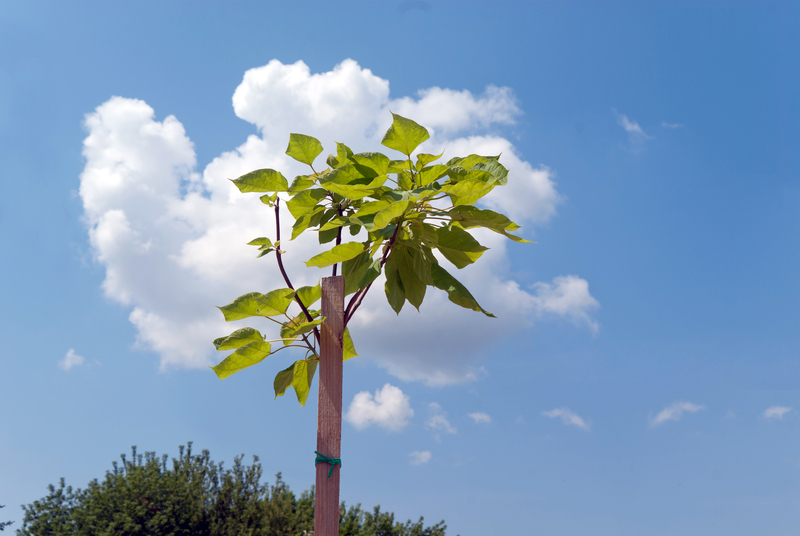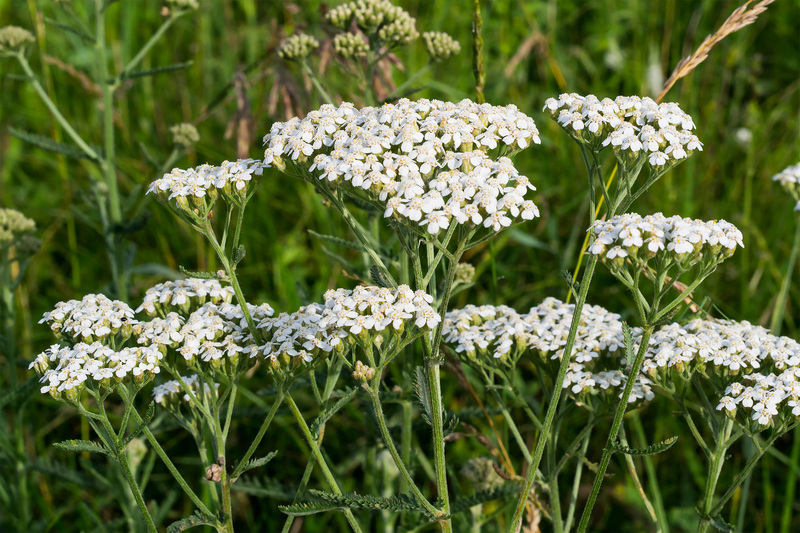Embark on your journey to orchid mastery
Posted on 31/08/2025
Embark on Your Journey to Orchid Mastery: The Ultimate Guide for Aspiring Enthusiasts
Are you captivated by the alluring charm of orchids? Embarking on your journey to orchid mastery is both a thrilling and rewarding pursuit. This comprehensive guide will illuminate every step, from understanding orchid varieties to unlocking advanced care secrets. Whether you're a beginner or a budding expert, you'll discover actionable insights, expert tips, and fascinating facts to help you master the art of growing these beautiful plants.

Why Pursue Orchid Mastery? The Allure and Significance
Orchids aren't just flowers--they're living masterpieces that inspire passion and patience. With over 25,000 naturally occurring species and more than 100,000 hybrids, orchids offer a symphony of colors, shapes, and fragrances. Each variation presents a unique set of challenges and rewards, making the path to orchid mastery both engaging and deeply satisfying.
- Unmatched Diversity: From Phalaenopsis (the popular Moth Orchid) to the mysterious Dracula species, there's an orchid for everyone.
- Symbolism and Culture: Orchids have adorned royal courts, inspired poets, and symbolized love, strength, and elegance throughout history.
- Personal Growth: Cultivating orchids enhances your patience, observation skills, and connection with nature.
Understanding the Orchid Family: Key Types for Beginners
To truly embark on your orchid journey, it's essential to recognize the main orchid types. Here are some of the most accessible and rewarding orchids for beginners:
- Phalaenopsis (Moth Orchids): These are the most popular houseplant orchids due to their captivating blooms and easy care requirements.
- Cattleya: Dubbed the "Queen of Orchids," Cattleyas are renowned for their large, fragrant flowers and often serve as the darling of orchid exhibitions.
- Dendrobium: Featuring slender canes and a wide color spectrum, Dendrobiums are both versatile and prolific bloomers.
- Oncidium (Dancing Lady): With bouquets of small, lively flowers, Oncidium species are perfect for those seeking a vibrant display.
- Paphiopedilum (Lady Slipper): Their unique pouch-shaped blooms offer an exotic touch to any orchid collection.
Setting the Stage: Creating the Ideal Orchid Environment
Essential Elements for Orchid Mastery
- Light: Most orchids thrive in bright, indirect light. Avoid harsh midday sun, which can scorch leaves, and opt for east-facing windows when possible.
- Humidity: Orchids flourish with humidity between 50% to 70%. In dry climates, use humidity trays or place a humidifier nearby.
- Temperature: Maintain a daytime range between 65?F - 80?F (18?C - 27?C) and slightly cooler night temperatures to encourage blooming.
- Air Circulation: Orchids need fresh air to stave off fungal diseases. Circulate air with a gentle fan but avoid strong drafts.
- Watering: Overwatering is the most common mistake. Water your orchid when the potting mix feels dry about an inch below the surface. Drainage is vital, so avoid soggy roots.
Choosing the Right Orchid Potting Mix
Orchid roots crave oxygen and a lightweight, fast-draining medium. Standard soil is unsuitable. Instead, opt for one of these mixtures:
- Bark Mixes: These mimic the natural growing conditions of many orchids, providing aeration and good drainage.
- Sphagnum Moss: Excellent for moisture-loving orchids but monitor closely to prevent root rot.
- Perlite & Charcoal: Added to enhance drainage and limit the buildup of excess minerals.
Pro Tip: Repot your orchid every 1-2 years to refresh the substrate and inspect root health. Choose a transparent pot if possible--this allows you to monitor root growth and moisture levels easily.
Embarking on Your Journey to Orchid Mastery: Step-by-Step Process
Step 1: Selecting Your First Orchid
When you're new to growing orchids, start with a robust and forgiving species like Phalaenopsis. Choose a healthy plant with:
- Firm, green leaves (avoid wrinkled or yellowing foliage)
- Roots that are white or green and plump, not mushy or brown
- No signs of scale, aphids, or mealybugs on leaves or stems
Step 2: Acclimating Your Orchid to Its New Home
Newly purchased orchids may need time to adjust. Keep your orchid away from direct drafts, heat vents, and direct midafternoon sunlight as it acclimates. Water lightly and monitor for stress signals such as dropping buds or wilted leaves.
Step 3: Establishing a Care Routine
- Watering: Use room-temperature, non-chlorinated water. Water in the morning to give roots time to dry and prevent rot. More orchids die from overwatering than under-watering.
- Feeding: Apply a balanced, orchid-specific fertilizer every 2-4 weeks during the active growth period. Dilute to half-strength to avoid fertilizer burn.
- Cleaning: Wipe leaves occasionally with a damp cloth to remove dust and keep photosynthesis efficient.
Step 4: Understanding Bloom Cycles and Reblooming
Orchids bloom on their own delicate timetable. Some may flower several times a year, while others bloom just once. After flowering, trim the spike above a node or let it die back naturally depending on the species' requirements.
- Rest Period: Many orchids rest after blooming. Reduce watering and withhold fertilizer until new growth appears.
- Triggering Blooms: For certain orchids, exposing them to cooler night temperatures in autumn may jumpstart flower production.
Advanced Orchid Mastery: Tips, Troubleshooting, and Pro Techniques
Common Challenges and How to Overcome Them
Even seasoned orchid growers face hurdles on their mastery journey. Here are solutions to common problems:
- Yellow Leaves: This can indicate overexposure to sunlight, root rot, or natural leaf aging. Move your plant to more indirect light and check root health.
- Root Rot: Caused by excess moisture. Remove the orchid from its pot, trim affected roots, and repot in fresh, fast-draining mix.
- Pests (Spider Mites, Aphids): Remove pests using a soft cloth or neem oil solution. Isolate affected plants immediately.
- No Blooms: Ensure your orchid is getting enough indirect light and proper temperature shifts (slightly cooler at night).
Repotting: Reinventing Your Orchid's Home
Repotting is vital for orchid vitality. A step-by-step approach:
- Water the orchid the day before--you want roots pliable, not soggy.
- Gently release the plant from its pot, avoiding root breakage.
- Trim away dead roots and remove old potting material.
- Position the orchid in a clean, sterilized pot and fill with new orchid mix.
- Avoid fertilizing for two weeks to allow recovery.
Propagation: Expanding Your Collection
Successful orchid propagation is a crowning achievement for those on the path to orchid mastery:
- Keiki (baby plant): Some orchids, especially Phalaenopsis and Dendrobiums, produce baby plants on their stems. When roots are 2-3 inches, gently detach and pot separately.
- Division: Mature, multi-pseudobulb orchids can be divided during repotting. Ensure each piece has at least three healthy pseudobulbs for successful re-establishment.
Orchid Mastery Beyond the Basics: Design, Display, and Community
Orchid Display: Creating a Living Art Gallery
Elevate your home decor with your growing orchid collection:
- Group orchids by humidity and light needs for simplified care and lush displays.
- Rotate plants regularly to ensure even light exposure and balanced growth.
- Showcase blooming orchids in prominent locations, but place recovering or resting plants in a dedicated "spa corner."
Joining the Global Orchid Community
The journey toward orchid mastery doesn't have to be solitary. Expand your network and knowledge:
- Local Orchid Societies: Clubs provide resources, lectures, and friendly competitions.
- Online Forums & Social Media: Platforms like Reddit and Facebook host orchid enthusiast groups for advice, inspiration, and sharing triumphs (and mishaps!).
- Annual Orchid Shows and Expositions: Experience breathtaking displays, meet professional growers, and acquire rare specimens.

Frequently Asked Questions: Your Journey to Orchid Mastery
How Often Should I Water My Orchid?
This depends on your orchid's species, potting mix, and climate. Generally, water every 7-10 days once the top inch of medium is dry. Use the "weight test"--lift the pot to gauge its heaviness before and after watering.
Why Aren't My Orchids Blooming?
Insufficient light and lack of temperature fluctuations are common culprits. Orchids need indirect but bright light and a noticeable dip in nighttime temperatures to trigger flower spikes.
Can Orchids Be Grown Outdoors?
Many orchid varieties can thrive outdoors in mild climates with filtered shade and protection from wind and frost. Always research your species' specific needs before transitioning outdoors.
Conclusion: Begin Your Lifetime Adventure in Orchid Mastery
With each care routine, repotting, and blooming cycle, your expertise deepens and so does your appreciation for these extraordinary plants. To truly master the art of growing orchids is to cultivate patience, horticultural knowledge, and a sense of wonder.
Now, it's your turn--embark on your journey to orchid mastery with confidence. Select your first plant, set the stage for growth, and join a global community passionate about these living jewels. The path may challenge you, but the radiant blooms--and the skills you gain--will reward you for a lifetime.
Happy growing, and may your orchid adventure thrive!

